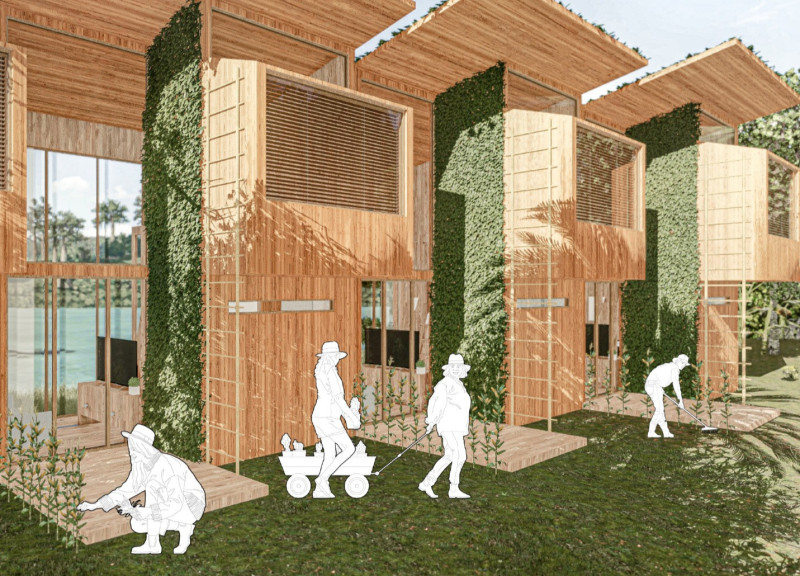5 key facts about this project
The Tribe Cabin is situated in the Brazilian rainforest and serves both the Kayapo Indians and visitors interested in indigenous cultures. Its design centers on sustainability and a strong connection to nature. The cabin functions as a living space that not only accommodates modern needs but also supports traditional lifestyles. The overall concept encourages ecological awareness and fosters a cultural exchange between residents and the forest.
Architecture Concept and Design
The design of the Tribe Cabin focuses on blending with the natural surroundings. Inspired by the flowing forms of the Amazon River, the cabin features a transparent structure that allows residents to feel immersed in the outdoors. Natural light floods the interior, creating a welcoming and bright environment. By prioritizing minimal ecological impact, the cabin reinforces the relationship between human habitation and the forest's delicate ecosystem.
Material Selection
Timber serves as the main building material for the Tribe Cabin, chosen for both its sustainability and its compatibility with local building traditions. Using timber helps to create a warm and inviting atmosphere while keeping ecological considerations at the forefront. Large openings integrated into the design enhance airflow, reducing the need for artificial light during the day and reinforcing the connection to the outside world.
Sustainable Features
A focus on energy efficiency drives the cabin’s design. The incorporation of solar panels allows for self-sustaining energy use, while a rainwater collection system provides a reliable source of fresh water. The option for additional systems, such as sanitation and irrigation, further showcases the commitment to supporting independent living. These features collectively work to reduce the cabin's environmental footprint and simplify life for its inhabitants.
Interior Adaptability
Inside, the cabin offers a flexible layout that can change according to the needs of its residents. Movable walls and adaptable spaces allow for varying activities, from cooking to working and socializing. This thoughtful design encourages a communal atmosphere while also offering personal space when required. The ability to reconfigure the interior supports the dynamic lifestyle envisioned for those who call the cabin home.
A standout feature of the design is the vertical garden, which enables residents to grow their own food year-round. This addition fosters local agricultural practices and strengthens the residents' bond with their environment, making daily life more connected to the rhythms of nature.




















































